“Progress of a society should be determined by the state of the most vulnerable and the weakest ones.”
MAHATMA GANDHI
The quote couldn’t be more relevant than it is in the current global scenario. It is no surprise that its essence can be felt in the SDG 2030 tagline “Leaving no one behind”. As India celebrates Gandhi Jayanti today, it is imperative that we not only reminisce about his ideals but imbibe them in true spirit. While our economy has attained the much needed momentum and resilience, we still have a long way to go when it comes to uplifting the weakest sections of the society. This can only be achieved when these communities are not just helped and supported but also empowered to take charge of their own wellbeing.
Resonating closely with these ideas is the extensive work being done by Anil Agarwal Foundation (AAF), the philanthropic arm of Vedanta Group. Their Chairman, Mr. Anil Agarwal, has committed 75% of his wealth to social good under the Giving Pledge. In FY2022-23 alone, AAF has contributed INR 454 crore on social impact initiatives and touched 44 million lives. Their work spans multiple sectors that include nutrition, education, women empowerment and livelihoods, healthcare and sports. They have recently began working in the domain of animal welfare through Project TACO. Their projects have been lauded by the government, international bodies and global philanthropists. The scale of their projects and the impact they have been able to achieve is remarkable.
In this exclusive interview, TheCSRUniverse is in conversation with Ms. Priya Agarwal Hebbar, Chairperson, Hindustan Zinc Ltd., Non-Executive Director, Vedanta Ltd. & Anchor, TACO. She delves deeper into their flagship project- Nand Ghar- which is built around her father’s (Mr. Anil Agarwal) vision that “no child goes to bed hungry”. The project is strategically designed to achieve holistic child development and women empowerment by working with and strengthening the existing Anganwadi ecosystem. She also takes us through their most recent project- The Animal Care Organisation (TACO) and gives us a glimpse of what the future plans for AAF look like.
Scroll down for this insightful interview:
Q. Anil Agarwal Foundation (AAF) is doing extensive work across multiple domains that include hunger mitigation, healthcare, education, livelihood & skill development, art & culture and even sports. Its flagship project, Nand Ghar, has already garnered well deserved appreciation and recognition. For the sake of new readers, could you take us through the basics first- what are Nand Ghars and how do they function to transform the lives of the communities they operate in.
A. Nand Ghar is our Foundation’s flagship social impact project working towards strengthening the Anganwadi ecosystem of India. The initiative is the embodiment of my father’s vision that ‘no child goes to bed hungry’.
We have re-imagined traditional Anganwadis and upgraded them to create modern Anganwadi centres into the Nand Ghar Model to address the early education, nutrition, hygiene and health needs of children and lactating women, and skill training initiatives for rural women. Besides, Project Nand Ghar is strategically designed to focus on holistic child welfare and women empowerment through our high impact, integrated services including e-learning for children aged 3-6 years, primary healthcare services, and economic empowerment of women, strengthening of local Government systems and building state-of-the-art infrastructure.
Our Nand Ghars have been upgraded using cutting-edge technology, making them earthquake resistant and fire-proof. They serve as model resource centres for communities, offering features like solar panels ensuring non-stop electricity supply, hygienic sanitation facilities, safe drinking water through water purifiers, smart televisions, tablets and kits for advanced e-learning, and educational materials to foster cognitive and motor skills. Supplementing the government’s efforts of providing hot cooked meals and take-home ration, every Nand Ghar is delivering multi-millet nutri-bars to children for their holistic growth. The centres also offer healthcare services through mobile health vans and enable access to specialized doctors via tele-consultancy. Most importantly, we contribute to women's empowerment through skill training, credit linkage, and entrepreneurship development, fostering economic independence.
The operations of our Nand Ghars are dedicated to maximizing their impact. They function as an early education and health centres for children in the morning and as a skill development training centres for women in the second half of the day.
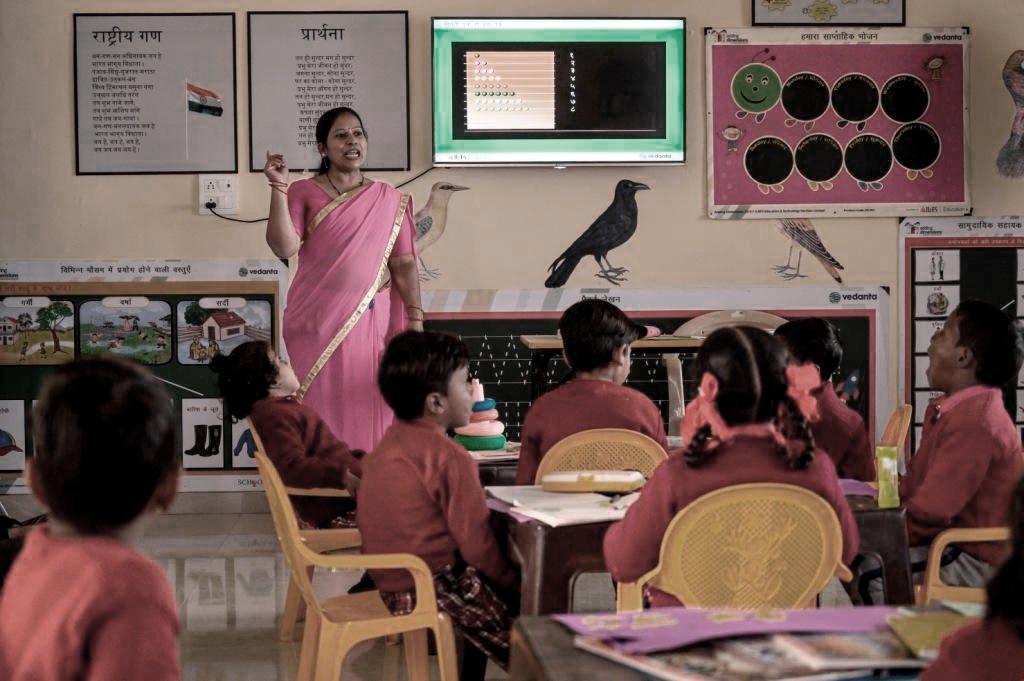 Q. What is the current status of the Nand Ghar Project- how many villages has it reached and what are the primary ongoing initiatives?
Q. What is the current status of the Nand Ghar Project- how many villages has it reached and what are the primary ongoing initiatives?
A. We have completed constructing over 5,500 Anganwadi Centres into state-of-the-art Nand Ghars across 14 states in India and have reached across 45 districts within these states. We are also developing 25,000 Nand Ghars in Rajasthan as per our MoU with the state government.
Delivering integrated services in Education, Health, Nutrition & Skill development are central to Nand Ghar’s approach. Our centres incorporate Building as Learning Aid (BaLA) designs, Added Dimensions Boards (AD boards), and smart televisions for e-learning. The reading and learning material are regionally curated, keeping diverse cultures in mind. Anganwadi workers and Sahayikas are trained extensively with an appropriate mix of classroom and on-site training.
We follow an integrated healthcare model with Mobile Health Vans (MHV) visits, Telemedicine, and a paramedic on wheels, providing healthcare facilities to communities. Regular OPDs, basic non-invasive tests, and free medication are available to those in need.
We meet nutritional needs by facilitating hot cooked meals, including organic fruits and vegetables grown in indigenous PoshanVatikas, ensuring a steady supply of nutrition to the community. Our nutritional interventions have helped these children move from Severe Acute Malnutrition (SAM)& Moderate Acute Malnutrition (MAM) categories to normal health, helping reduce the number of malnourished children in the country. To extend our mission of making India malnutrition free, since April quarter of this year, we have been supplementing children’s nutritional needs with protein and energy dense multi-millet nutri-bars. This has been launched as a pilot programme in Varanasi district to provide millet bars to almost 50,000 children daily around 1400 Anganwadi centres and is in tandem with the government’s initiative to promote millets in one’s daily diet, also in a year that is being observed as The International Year of Millets. Assessing the encouraging data, I am happy to see this initiative create a positive difference in children’s daily nutrient intake, and reduced cases of their absenteeism at centres.
An initiative that is extremely close to my heart is Vedanta’s #RunForZeroHunger, a mass movement that brings people together for a noble cause of pledging a nutritious meal to a child at a Nand Ghar. We are materialising this mission through every kilometre clocked by the runners at our marquee events such as the Vedanta Delhi Half Marathon and Vedanta Pink City Half Marathons. Over 50,000 people from across the world participated in this cause, clocking more than 2 million kilometres and 2 million meals in the year 2022. We are aiming for an even higher count of meals to be delivered to our children at Nand Ghars with Vedanta’s Delhi Half Marathon scheduled on October 15, 2023.
Additionally, we recently launched a multimedia campaign with the tagline ‘Agar Bachpan Se Puchha Khaana Khaya Toh Desh Ka Kal Banaya’ to address the critical issue of child nutrition and ensure that we tap the potential of every child. At Nand Ghars, we are working toward ensuring the holistic development of children. With this campaign, we aim to engage every citizen of India through volunteering and contributing in the movement to eliminate hunger and malnutrition.
Taking the Nand Ghar experience global, we have started a programme that hosts volunteers from around the world at our centres with an aim to foster cross-cultural learning. The programme encourages the volunteers to engage with the local community, children and women through various activities and teaching sessions, while the beneficiaries of Nand Ghar get a glimpse of international practices, enriching their experiences.
Q 3. Could you shed some light on how Nand Ghars are helping women with skill development and livelihood opportunities? Are there any specific milestones or success stories with respect to this aspect that you would like to share with us?
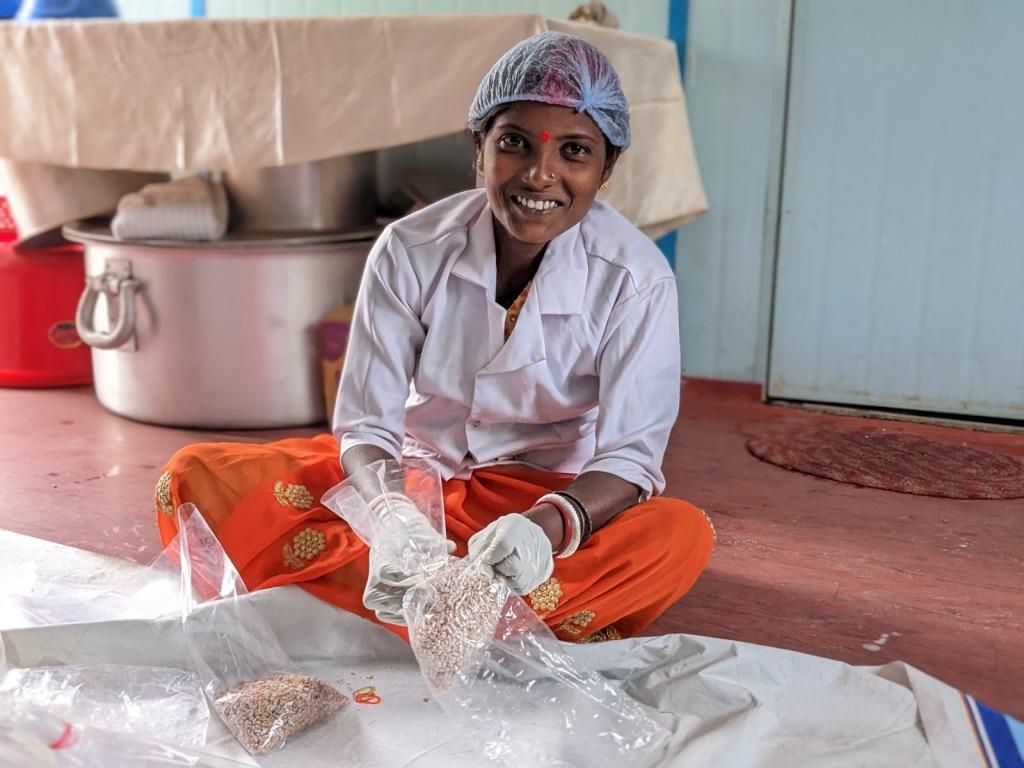 A. Skills training to women is a core initiative that takes place within the Nand Ghars. Our Nand Ghar becomes a hub for skill development every afternoon once the children leave for home.
A. Skills training to women is a core initiative that takes place within the Nand Ghars. Our Nand Ghar becomes a hub for skill development every afternoon once the children leave for home.
In this, we facilitate the entrepreneurial journey of women, right from their training to developing a business plan, access to micro credit and market linkages. Most women we supported through Nand Ghars, have not only paid back their loans but are also running successful businesses in their region today. For those who do not want to become entrepreneurs, we support them by securing jobs in which they have acquired skill training via Nand Ghar programs through activities such as Rudraksh mala making, wool-spinning, bamboo handicrafts, paper bag stitching, and more! Our trainings are provided with the aim to ensure placement or linkage to job work and to help women get regular income. Women associated with us have been earning an incremental income of up to INR 10,000/- per month.
Another training that we have added to our programthat is not only helping us impart skill training but also scale up our model of delivering nutri-bars to other states is training women and SHGs in nutri-snack making.
We also partner with skill development organizations to conduct a thorough assessment of employability skills. We recently signed an MOU with Rajasthan Skills & Livelihood Development Corporation to support skilling activities of Nand Ghar beneficiaries, thus bringing a sustainable aspect to the vertical.
Our program’s reach and impact have been significant. It has already positively impacted over 1.5 lakh women and aims to support close to 9 lakhsthrough the expansion to 25,000 Nand Ghars in Rajasthan. These women aren’t just becoming financially independent; they are becoming beacons of inspiration for others, and we have several such stories at Nand Ghar.
The one that has stayed with me is Pavani Devi from Barmer in Rajasthan, one of the first few beneficiaries of our skilling initiatives of stitching program at Nand Ghar. From someone who had rarely ever stepped out of her home, today she is an entrepreneur, running her own little boutique set up. Nand Ghar has given wings to her dreams, whereby she is not only financially independent but has also been able to buy her own home with her contribution. Pavani Devi’s success has brought alive hopes for many women in her region who have followed her footsteps to enroll in our program.
Q. Very few social projects achieve the reach and impact that has been attained by Nand Ghar. In your opinion, what are the most crucial factors that have led to its success and what can other corporates/NGOs learn from it?
A. In my opinion, our success can be attributed to a combination of visionary goals, integrated features we deliver, and our strategic alignment to the priorities of the Government of India. Our mission resonates with the Prime Minister’s national objectives of eradicating child malnutrition, providing education, healthcare, and empowering women. By focusing on high impact delivery of services in each of these pillars that are aligned with national schemes such as – Beti Bachao, Beti Padhao, POSHAN Abhiyaan, Swachh Bharat Mission and more- Project Nand Ghar is contributing to fulfilling these goals. This alignment not only lends credibility but also ensures that our initiative addresses critical societal needs of basic education, nutrition, health, and social justice for all.
Our success of Project Nand Ghar can be traced back to the sense of ownership and belongingness we have been able to instil in the communities we work with. With alignment in the philosophies of the local stakeholder and with government’s support, our project has garnered much success. At Nand Ghars, we also host recreational activities such as night fests, movie shows, special day celebrations to engage more people from local communities. We encourage participation of Panchayati Raj Institutes and village committees on various pillars to get their inputs. Also, the convergences and partnerships we have established by bringing the best in field representatives to collaborate and achieve a common goal have been a key to creating maximum impact.
I believe that our understanding of interconnected challenges and providing multifaceted solutions sets an example for others to follow in the realm of social projects. By integrating these key factors, corporates as well as NGOs can maximize their reach and impact while contributing meaningfully to society.
Q. AAF has a vast social portfolio, and no discussion on it would be complete without going over TACO. What inspired the Foundation to foray into the new domain of animal care through TACO?
A. At Vedanta, we have always envisioned a nation wherein there are ample opportunities for the youth, women are empowered, children are healthy, and the country is progressing rapidly. Aligned with our parent organization’sethos of giving back to society and fostering community development, Anil Agarwal Foundation (AAF) is equally committed to addressing a wide range of societal concerns and enhancing community well-being. AAF is built on the premise of empowering communities, transforming lives, and facilitating nation-building through sustainable and inclusive growth. Our vision is based on the conviction that all aspects of society, be it hunger alleviation, providing healthcare, education, livelihood, or giving opportunities to sports talent in communities, they are allinterconnected, and each playan important part in overall development of the nation. We believe that animal welfare is at the core of our endeavor to contribute towards a healthier environment for all; and just as well-being of human is inextricably related to various elements of society, animal welfare too plays an important role in maintaining a balanced and harmonious ecology. This became the catalyst to launch The Animal Care Organization (TACO) under the Foundation.
Q. Please tell us a little more about TACO - what are the guiding principles, key areas of focus and working strategy?
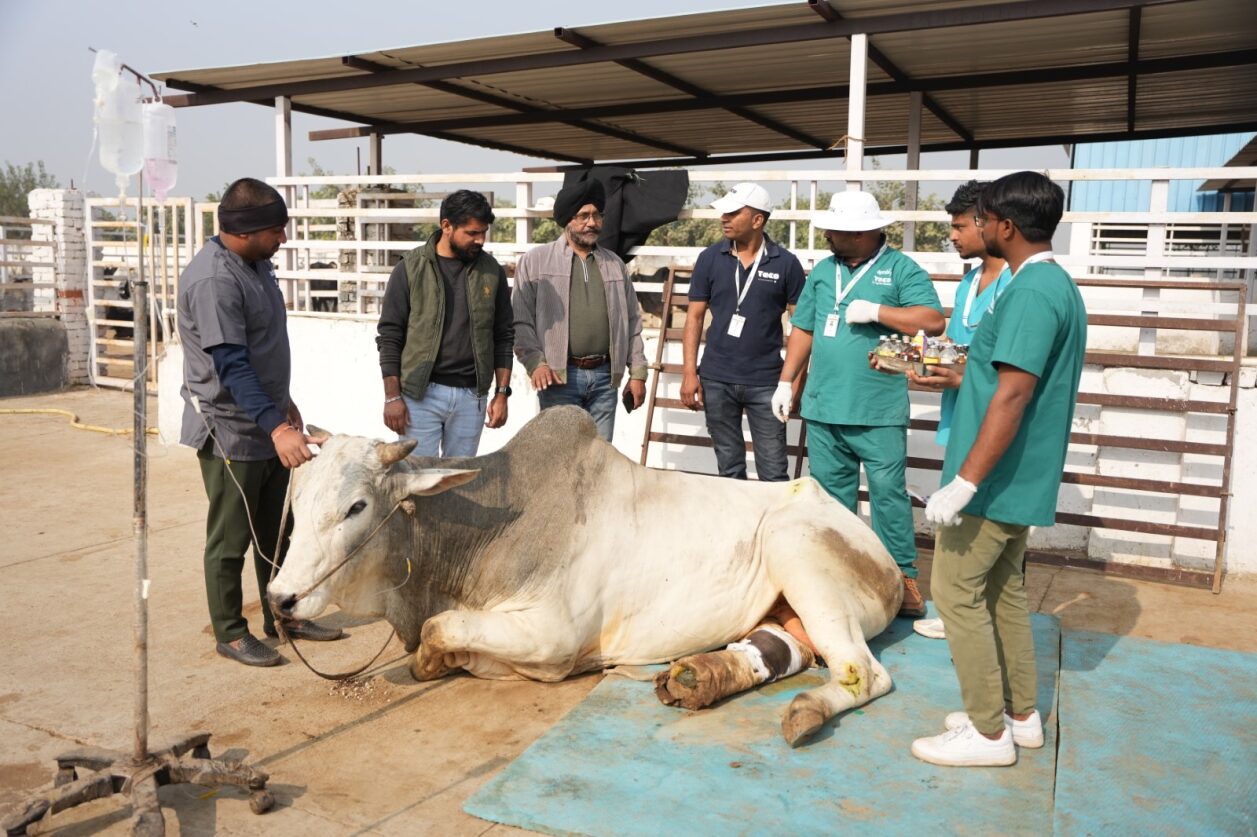 A. Founded with a motive to improve the future of animal health and well-being, TACO is contributing towards better animal care, preservation of wildlife and biodiversity, and promotion of a symbiotic relationship between animals, humans, and the natural world. It is guided by the ‘One Health’ approach that recognizes that the health of people is closely connected to the health of animals, plants and our wider environment. In essence, our journey into animal care through TACO is a natural extension of our commitment to creating a better world for every living being. I believe that by embracing this new domain, we can contribute to a more harmonious and sustainable future for our upcoming generations.
A. Founded with a motive to improve the future of animal health and well-being, TACO is contributing towards better animal care, preservation of wildlife and biodiversity, and promotion of a symbiotic relationship between animals, humans, and the natural world. It is guided by the ‘One Health’ approach that recognizes that the health of people is closely connected to the health of animals, plants and our wider environment. In essence, our journey into animal care through TACO is a natural extension of our commitment to creating a better world for every living being. I believe that by embracing this new domain, we can contribute to a more harmonious and sustainable future for our upcoming generations.
TACO provides shelter services, veterinary services and training facilities to heal and protect animals. Guided by the vision of a compassionate India where every animal lives with dignity and respect, our mission revolves around establishing a sustainable and scalable ecosystem for animal well-being.
At the heart of our guiding principles are the internationally recognized ‘Five Freedoms of Animal Welfare’, as enshrined in the Universal Declaration on Animal Welfare (UDAW). Our key areas of focus span around our six key pillars – shelter, hospital,academy, disaster relief efforts, wildlife conservation and sectoral engagement, each designed to elevate animal welfare to internationalstandards. Our initiatives encompass a broad spectrum of activities, spanning from cutting-edge medical research to the establishment of programs aimed at enhancing capacity. We are committed to community outreach, passionate advocacy, and strategic investments in the training of animal health experts.
Q. TACO’s mission is based on six pillars. Please tell us a bit more about these pillars and how you plan to advance the organisation’s work under each head?
A. At TACO, we firmly believe that every animal deserves a safe haven. Under our Shelter pillar, we are committed to rescuing, rehabilitating, and rehoming animals, particularly focusing on those who have been abandoned, are sick or elderly. Our core values lie in providing these animals with a second chance at life, filled with care and compassion, and further re-homing them wherever possible.
Our next pillar - quality medical care is essential for the well-being of animals in need. We are committed to establishing state-of-the-art medical facilities that provide advanced care to animals requiring medical attention. We provide emergency and rescue facilities, preventive veterinary care along with mobile ambulance.
In addition to this, we are also deeply invested in wildlife conservation, safeguarding the well-being of animals in sanctuaries, and promoting their conservation.
Central to our strategy is also theTraining Academy which will bethe hub for educating and training communities on animal welfare, while nurturing a skilled workforce of veterinarians and dedicated community workers. Additionally, under Disaster Relief, we work on delivering animal care during natural calamities and exigencies in affected areas. Through the pillar of ‘Sectoral Engagement, we aim to curate knowledge forums to deliberate on providing better animal care.
Q. What are the initiatives/projects that TACO has undertaken or supported so far? Which organisations have you partnered with for these projects?
A. In April 2022, TACO marked its launch bywith a strategic partnership with the Government of Haryanato adopt the Tapobhoomi Gaushala in Faridabad and develop it as a model animal shelter with advanced clinical facilities. We are also constructing a new OPD clinic at this shelter, that will provide best in class animal healthcare, preventive veterinary care, a spay and neuter programme, diagnostics, and mobie emergency care units. We have also launched a veterinary ambulance,servicing Faridabad and neighbouring areas, underlining our dedication to rescuing and caring for sick and injured animals.
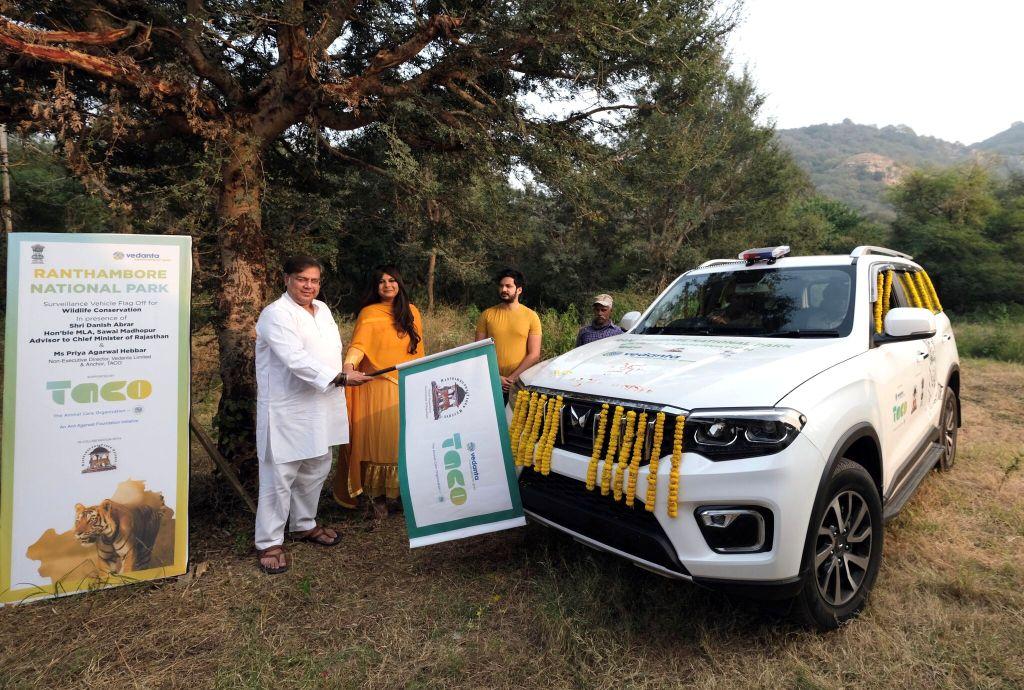 In a move to promote wildlife conservation, we joined hands with the Forest Department of the Government of Rajasthan on International Tiger Day 2022 to grant INR 1 Crore to procurepatrolling vehicles and bolster infrastructure at the Ranthambore National Park. To further strengthen conservation efforts for big cats in the region, we recently announced a grant of INR 1 crore to Ramgarh Vishdhari Tiger Reserve in Rajasthan, to establish five anti-poaching camps, equipped with solar panelsand two surveillance vehicles to the field rangers for better on-ground mobility to ensure protection of wildlife.
In a move to promote wildlife conservation, we joined hands with the Forest Department of the Government of Rajasthan on International Tiger Day 2022 to grant INR 1 Crore to procurepatrolling vehicles and bolster infrastructure at the Ranthambore National Park. To further strengthen conservation efforts for big cats in the region, we recently announced a grant of INR 1 crore to Ramgarh Vishdhari Tiger Reserve in Rajasthan, to establish five anti-poaching camps, equipped with solar panelsand two surveillance vehicles to the field rangers for better on-ground mobility to ensure protection of wildlife.
As part of our efforts to build awareness about the need for an ecosystem for stray animals’ care, we joined hands with actor Bhumi Pednekar led Climate Warrior initiative to launch a water bowl challenge and walkathon in Mumbai.
Recently when Delhi NCR was struck by floods, TACO mobilised disaster relief efforts to save lives and livelihood of animals and people in five villages near our Faridabad shelter. We supported the affected with food, green fodder to animals and helped with treating and transferring of injured animals.
Our efforts have also been supported by like-minded organisation like Fujifilm with equipment to carry out blood tests on cattle. Likewise, Pedigree India joined hands with us to conduct feeding drives for dogs at our shelter.
Till now, we have treated over 1,000 animals at our shelter. We hope to increase our capacities and double the number of animals.
Q. What does the roadmap for the next 2-3 years look like for TACO - are there any specific goals/ objectives that the organization has set for itself?
A. We are expanding our focus to cover a much wider species of animals. Our efforts now encompass the analysis and development of comprehensive programs aimed at safeguarding various animal species across different states. Through meticulous evaluation, we are identifying and refining these programs to ensure their effectiveness.
We are also deliberating on setting up a mega animal shelter in Rajasthan with a special focus on camelswhere several reports of abandoned camels going stray have surfaced. Apart from the shelter, we are also considering 24x7 multi-speciality hospital, animal birth control programmes, mobile health van, ambulance and more to create an integrated system for animal welfare.
I pointed out earlier about our six distinct pillars, and to further scale it up, we are planning to create a Hub and Spoke Model. Within the hub, we will be establishing an integrated ecosystem that encompasses educational institutions and hospitals, catering to both domestic and wildlife animals. This holistic approach allows us to provide a wide range of support.
Concurrently, we are creating a network of spokes that extends across the entire country. This approach acknowledges the imperative need for transformation in animal protection strategies. By implementing this widespread network, we strive to embody the principles voiced by Mahatma Gandhi, who famously stated, "The greatness of a nation and its moral progress can be judged by the way its animals are treated." Our commitment aligns seamlessly with this profound sentiment, driving us to create a positive impact on our nation's moral fabric through our compassionate and dedicated endeavours.
Q. AAF works extensively across multiple domains. What are the parameters that guide the Foundation’s resource allocation among these domains? What arethe Foundation’s major focus areas (in terms of resource allocation) for this year?
A. Our Foundation’s comprehensive approach is exemplified by the diverse initiatives undertaken across the nation. We channel our resources across multiple domains to create a significant impact in various social sectors. The Foundation has pledged INR 5,000 Cr over the next five years towards the socioeconomic development of our nation and its community. We are addressing critical areas including women and child development, community healthcare, building community infrastructure, livelihood through skilling for women and youth, animal welfare, drinking water & sanitation, sports as well as promoting art & culture.
Our Chairman, my father, Mr. Anil Agarwal has even joined The Giving Pledge by committing 75% of his wealth to social good.
With our efforts to upscale to 29,000 Nand Ghars across India, a larger part of our focus as well as spend will be directed towards project Nand Ghar and its interventions.
Animal welfare is also a cause that we are deeply invested in and since we launched TACO last year, we are not only carrying out initiatives on animal care through the project but going beyond to cover Vedanta’s business unit locations as well.
We will continue our focus on harnessing India’s abundant talent at the grassroots through our sports initiatives. We have even announced the development of the Anil Agarwal International Cricket Stadium in Rajasthan, which will become India’s second largest cricket stadium to nurture sports talent.



 Q. What is the current status of the Nand Ghar Project- how many villages has it reached and what are the primary ongoing initiatives?
Q. What is the current status of the Nand Ghar Project- how many villages has it reached and what are the primary ongoing initiatives? A. Skills training to women is a core initiative that takes place within the Nand Ghars. Our Nand Ghar becomes a hub for skill development every afternoon once the children leave for home.
A. Skills training to women is a core initiative that takes place within the Nand Ghars. Our Nand Ghar becomes a hub for skill development every afternoon once the children leave for home. A. Founded with a motive to improve the future of animal health and well-being, TACO is contributing towards better animal care, preservation of wildlife and biodiversity, and promotion of a symbiotic relationship between animals, humans, and the natural world. It is guided by the ‘One Health’ approach that recognizes that the health of people is closely connected to the health of animals, plants and our wider environment. In essence, our journey into animal care through TACO is a natural extension of our commitment to creating a better world for every living being. I believe that by embracing this new domain, we can contribute to a more harmonious and sustainable future for our upcoming generations.
A. Founded with a motive to improve the future of animal health and well-being, TACO is contributing towards better animal care, preservation of wildlife and biodiversity, and promotion of a symbiotic relationship between animals, humans, and the natural world. It is guided by the ‘One Health’ approach that recognizes that the health of people is closely connected to the health of animals, plants and our wider environment. In essence, our journey into animal care through TACO is a natural extension of our commitment to creating a better world for every living being. I believe that by embracing this new domain, we can contribute to a more harmonious and sustainable future for our upcoming generations. In a move to promote wildlife conservation, we joined hands with the Forest Department of the Government of Rajasthan on International Tiger Day 2022 to grant INR 1 Crore to procurepatrolling vehicles and bolster infrastructure at the Ranthambore National Park. To further strengthen conservation efforts for big cats in the region, we recently announced a grant of INR 1 crore to Ramgarh Vishdhari Tiger Reserve in Rajasthan, to establish five anti-poaching camps, equipped with solar panelsand two surveillance vehicles to the field rangers for better on-ground mobility to ensure protection of wildlife.
In a move to promote wildlife conservation, we joined hands with the Forest Department of the Government of Rajasthan on International Tiger Day 2022 to grant INR 1 Crore to procurepatrolling vehicles and bolster infrastructure at the Ranthambore National Park. To further strengthen conservation efforts for big cats in the region, we recently announced a grant of INR 1 crore to Ramgarh Vishdhari Tiger Reserve in Rajasthan, to establish five anti-poaching camps, equipped with solar panelsand two surveillance vehicles to the field rangers for better on-ground mobility to ensure protection of wildlife.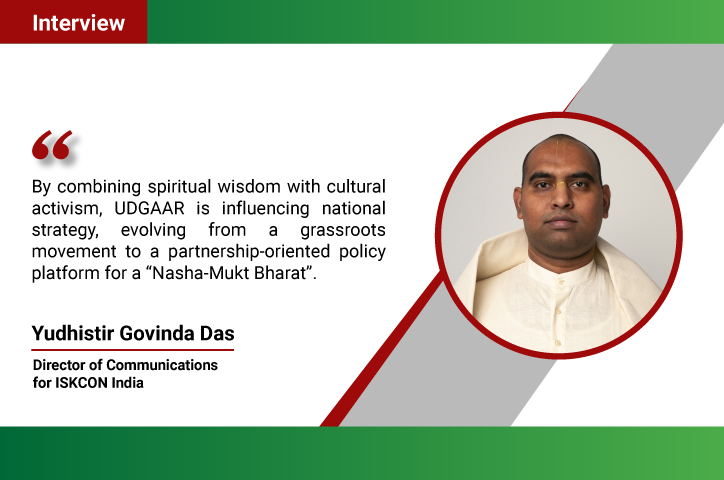

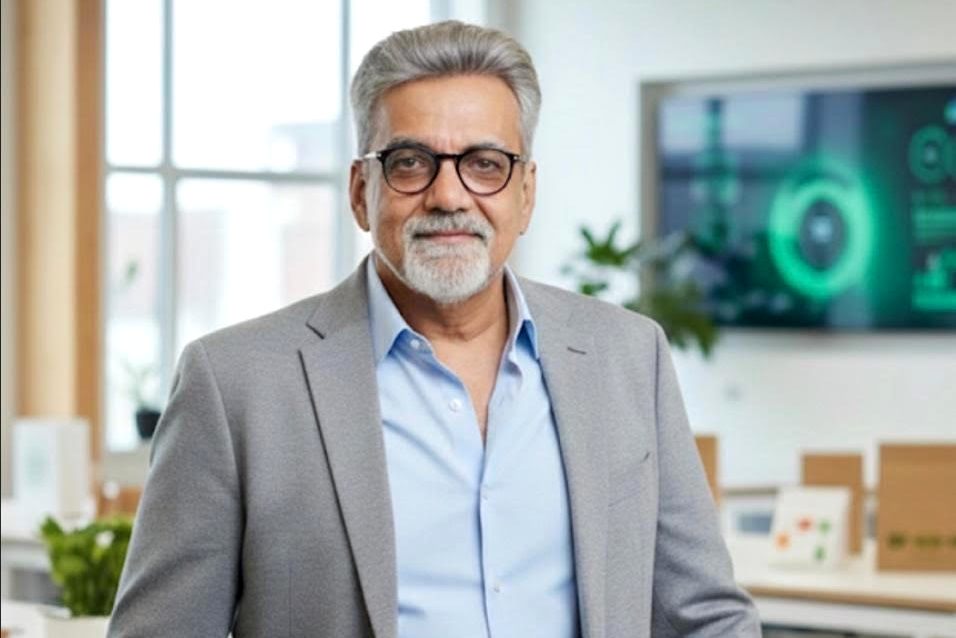


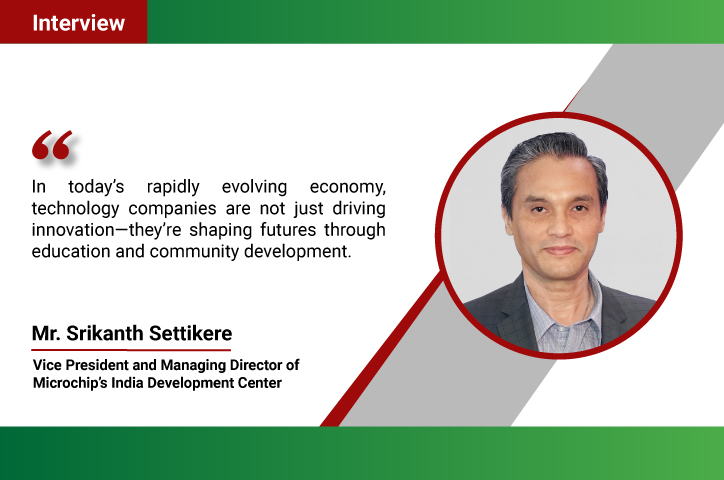
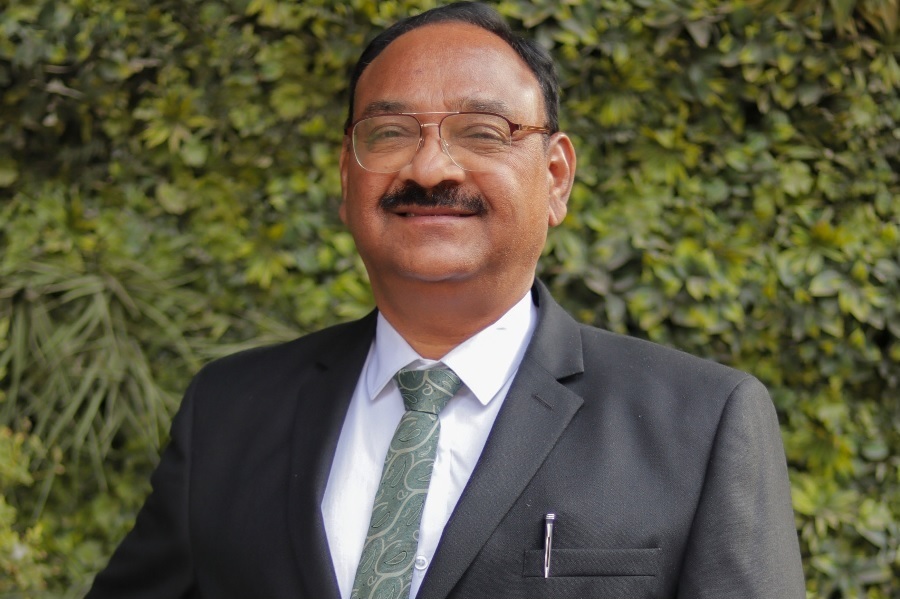
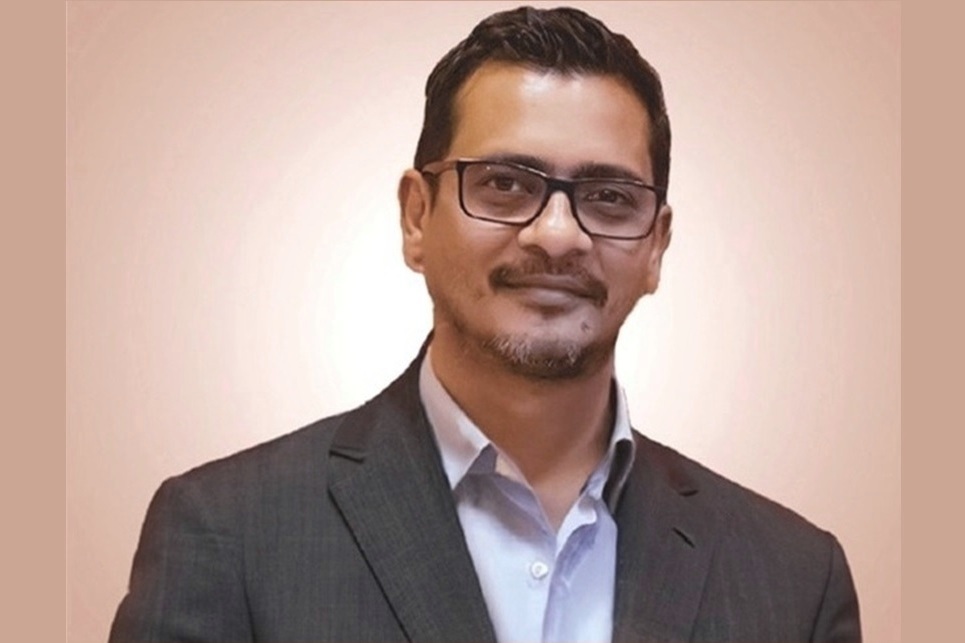


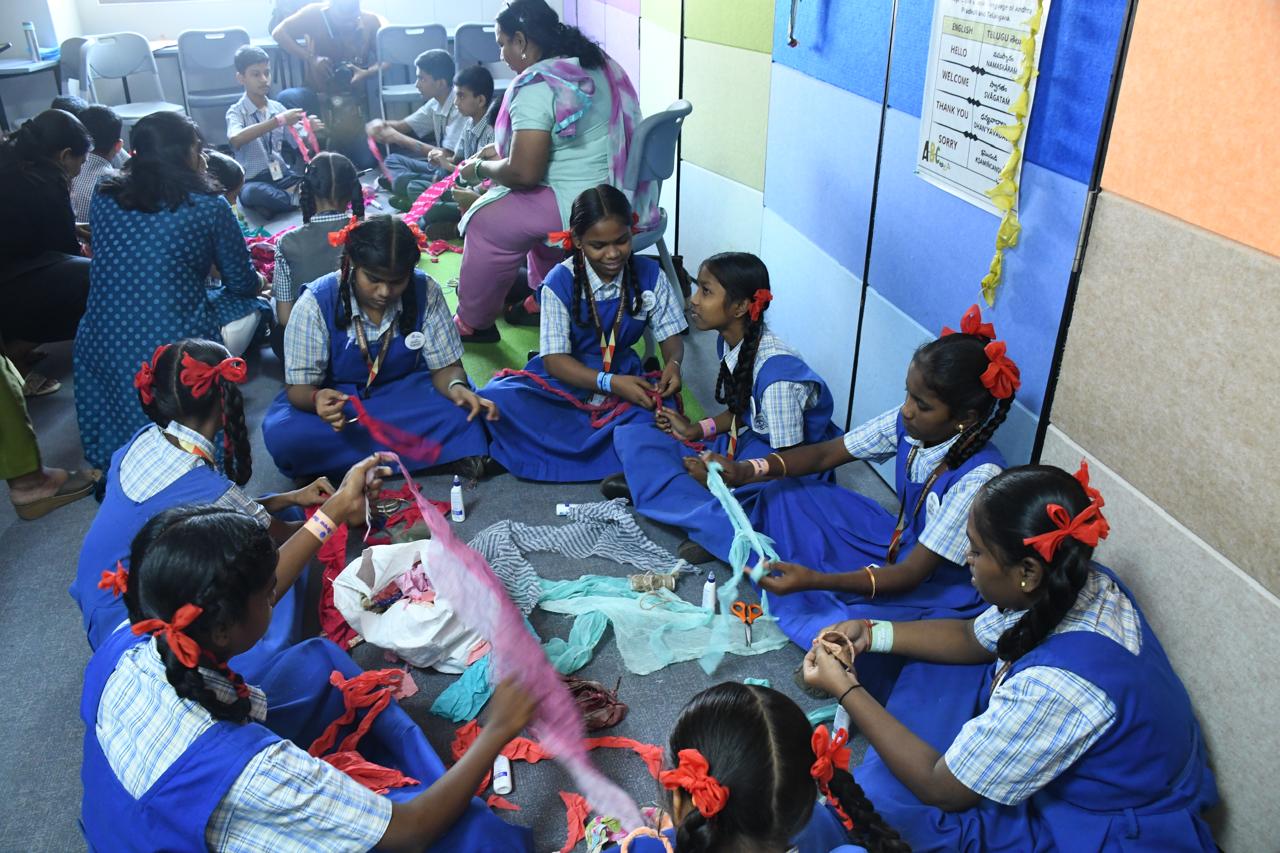

.jpg)




